Final Page of Four
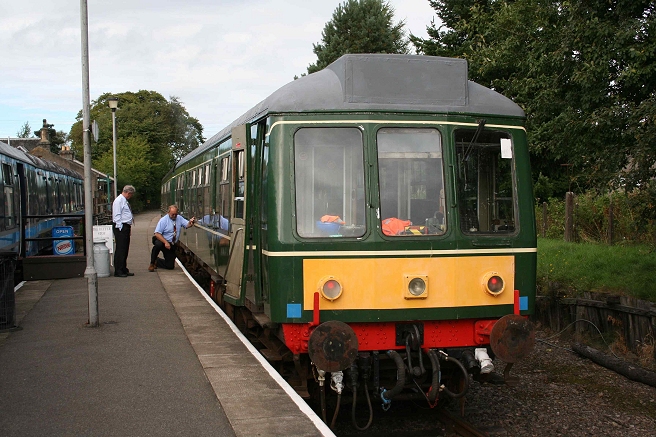
On arrival at Dufftown the driver checks out
a problem with the DMU,, which he delt with quite quickly
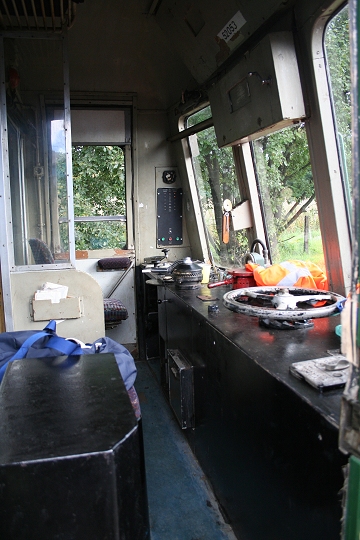
The DMU driving cab. Quite different from a
car or lorry. The wheel is the unit's parking brake. The
red handle is the Emergency brake and the black handle just to the
left the normal working train brake.
It also incorporates the reversing lever. The handle to the far left
of that is the power controller and the
Dead man's Handle.They are officially called the Driver's Safety
Device" (D.S.D.).
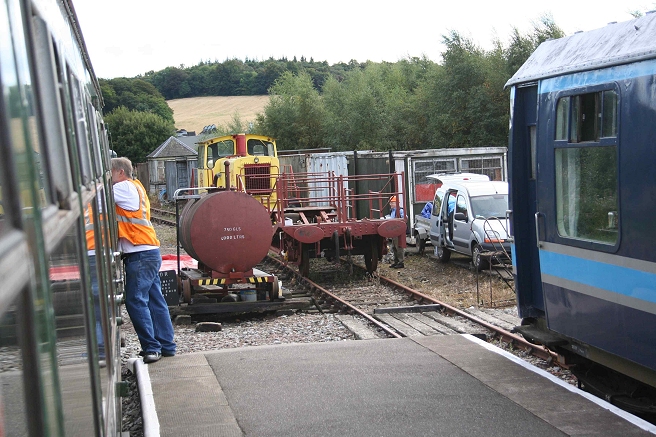
As if the train was not late enough on departing, it was
stopped just as suddenly by a member of the staff to relay a problem
up ahead, which the driver had to watch out for and reduce speed to
pass.
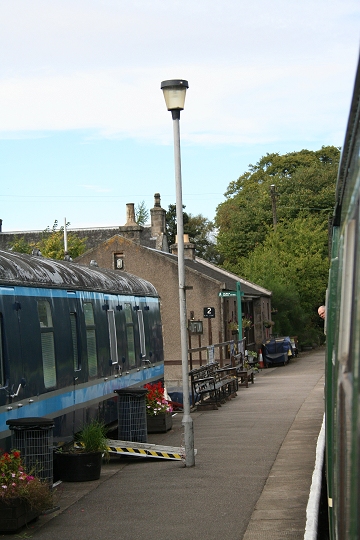
A passenger looks out wondering why the late
train has been stopped
after it's brief effort to pull away
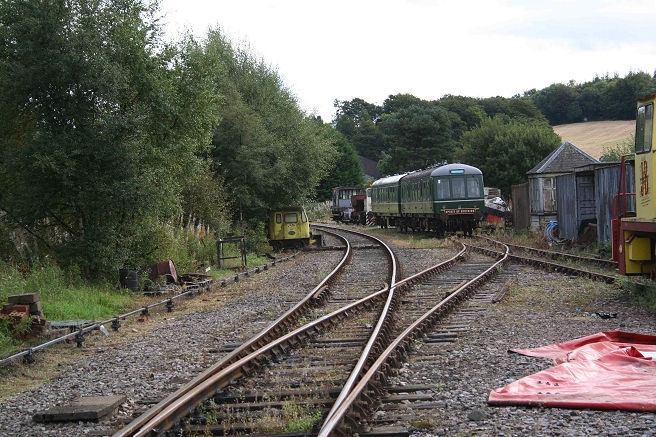
The DMU finally gets the 'right awa' and
starts to power up past the sidings, which contain numerous artifact
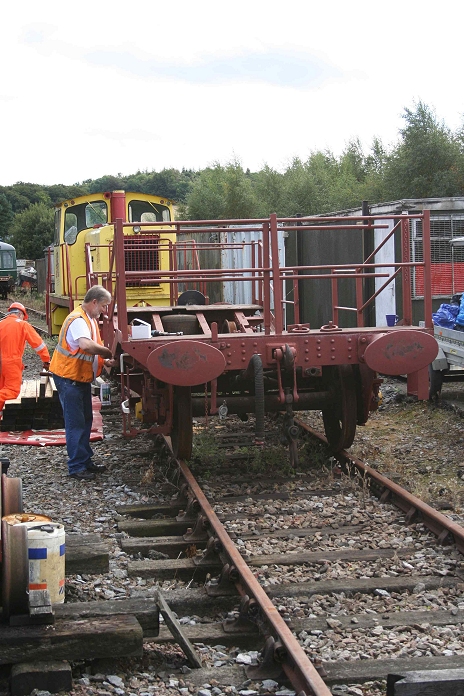
As we pass the staff member who relayed the
problem to the driver has returned to his
duties.
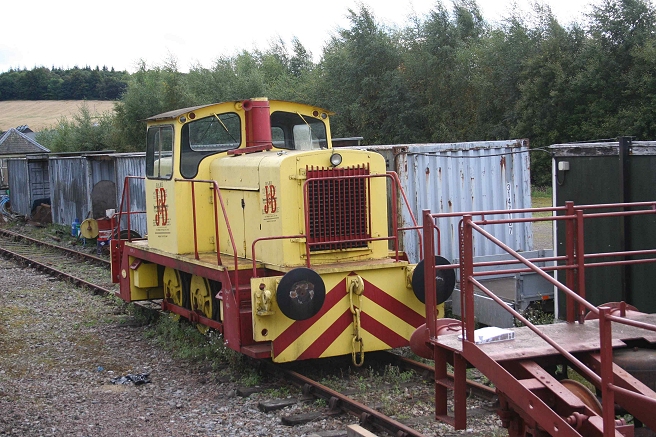
Passing the J&B Distillery six-wheeled
diesel mechanical shunter
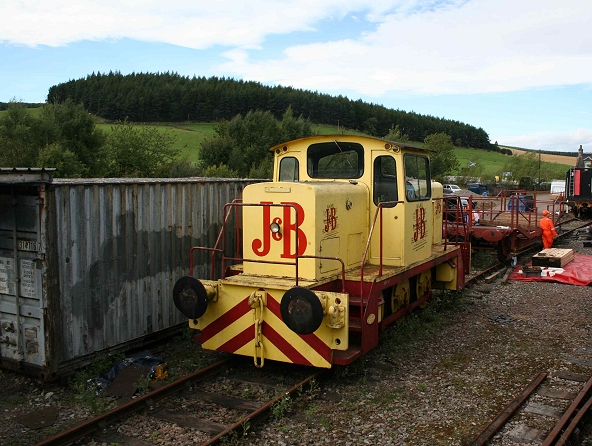
The shunting engine is the main loco for
working engineering trains on the branch line
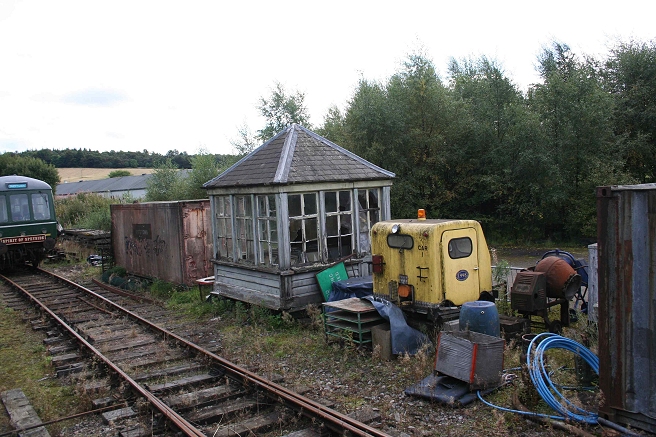
Some interesting artifact in various state
of repair, or decay! The signal box was probably a small ground frame
cabin that
worked on this or some other railway
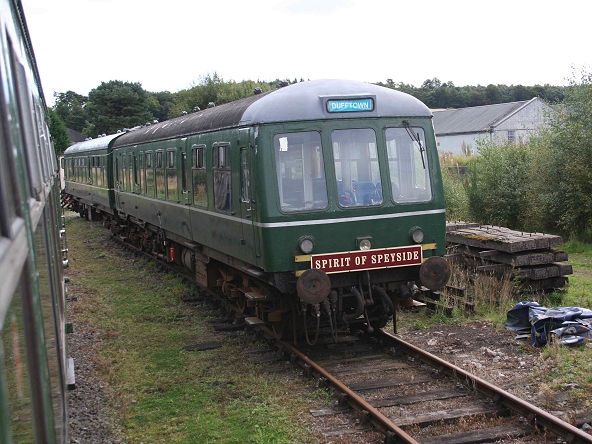
The spare Diesel Multiple Unit (DMU) that is
often used to increase the coaches of the working DMU for special
events when there are large groups of passengers or possible hired for
a wedding or anniversary event
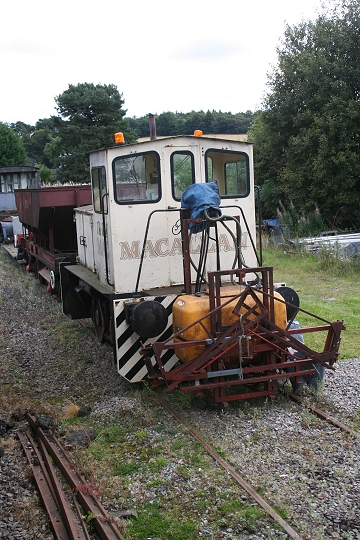
The Macallan Diesel Mechanical shunter
represents the sort of small loco
that worked within whisky distillery's
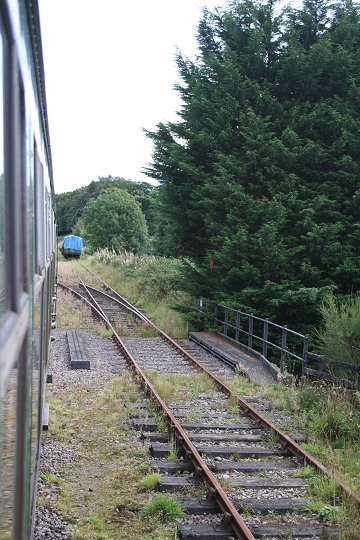
The crossover in and out of the goods yard.
This was originally the old 'down' line
into the station when there were two working platforms. The unit is
using the
old 'up' line. The single line too and from Keith starts from this
crossover
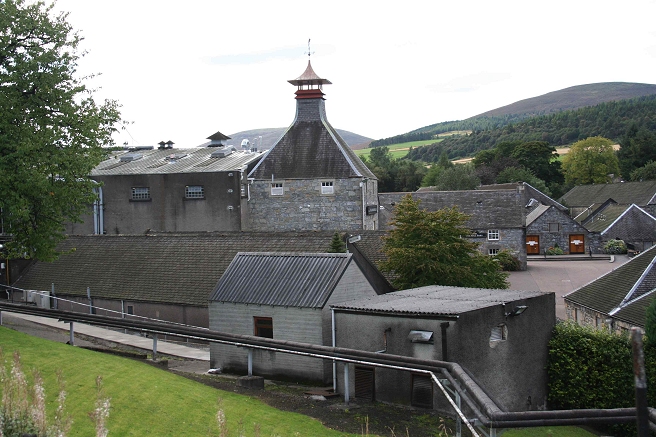
Glen Fiddich Distillery

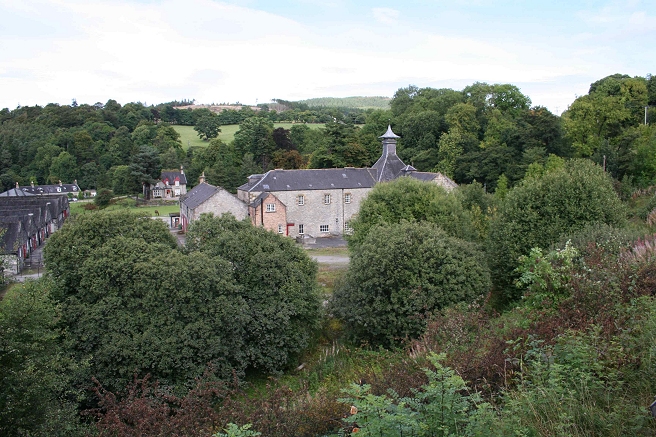
Ditto
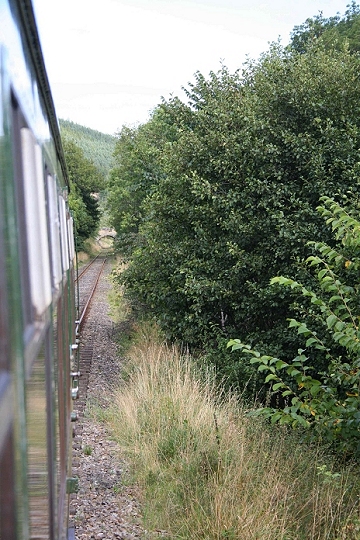
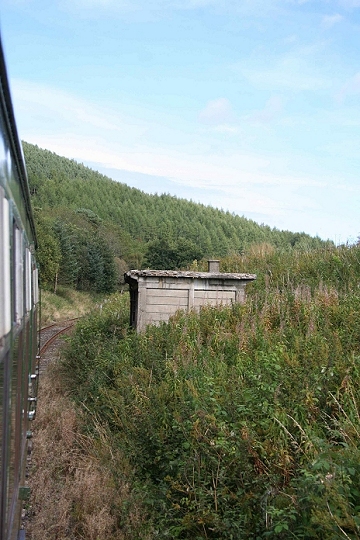
North of Glen Fiddich heading towards
Dummure
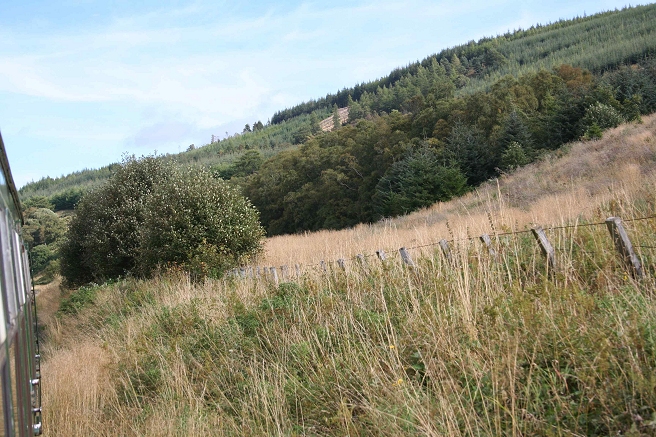
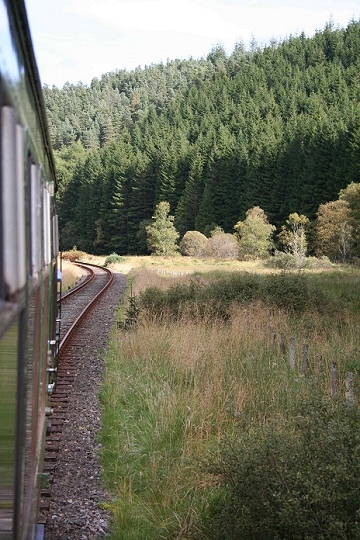
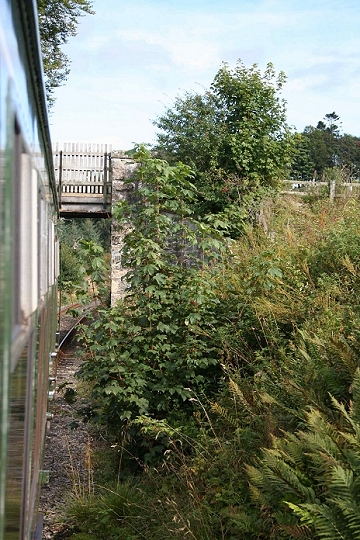
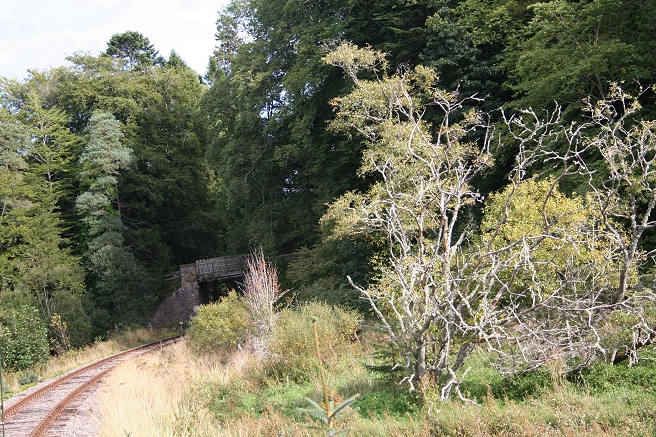
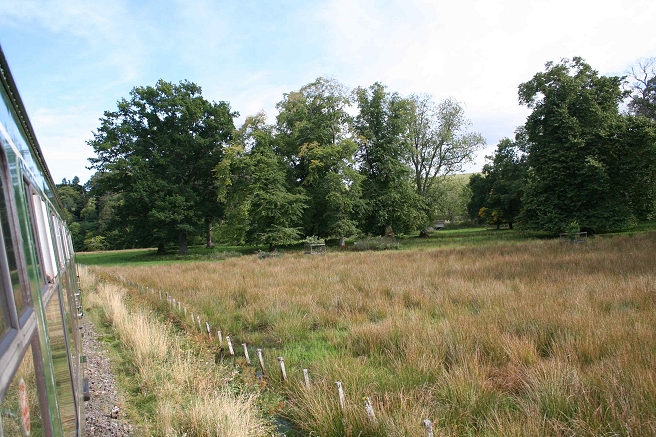
Running towards Drummure station
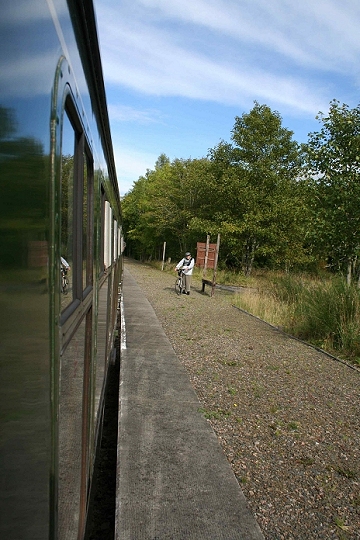
The cyclist has managed to return to
Drummure station and catch his train
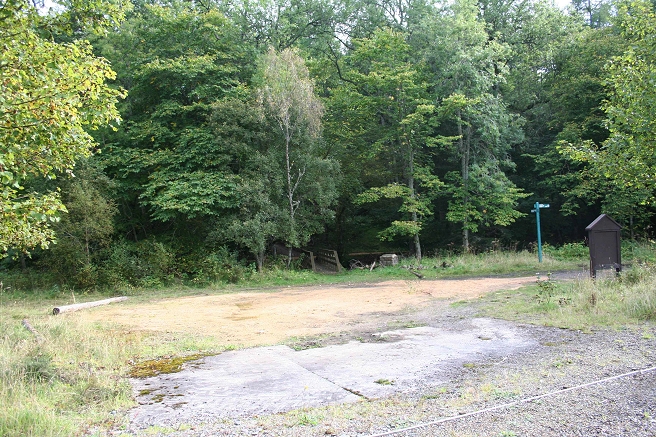
A very empty Drummure station, with only the
base of the old station buildings to remind you that there was a lot
more to it
in the past.There is a nice walk in and around the station area.
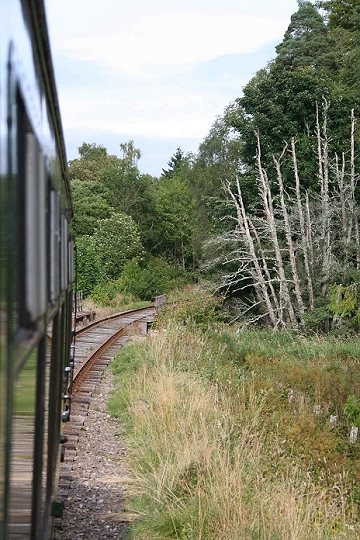
To the north of Drummure
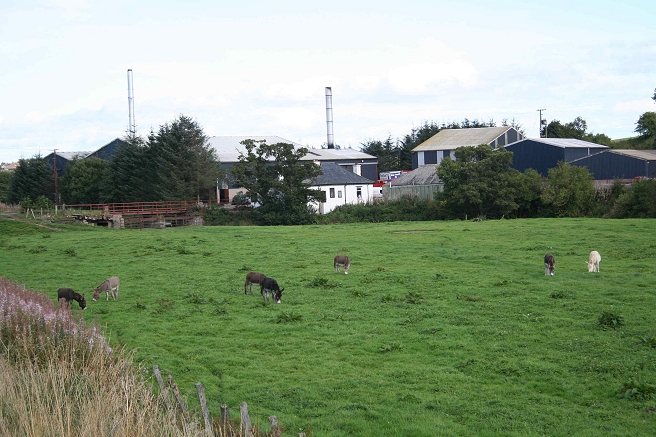
Unusual to see so many Donkys in a field

The southern outskirts of Keith is just
around this bend
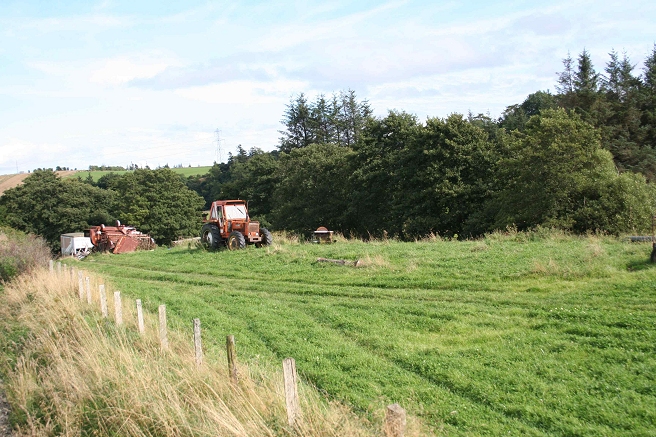
A mile or so more and you will be in Keith
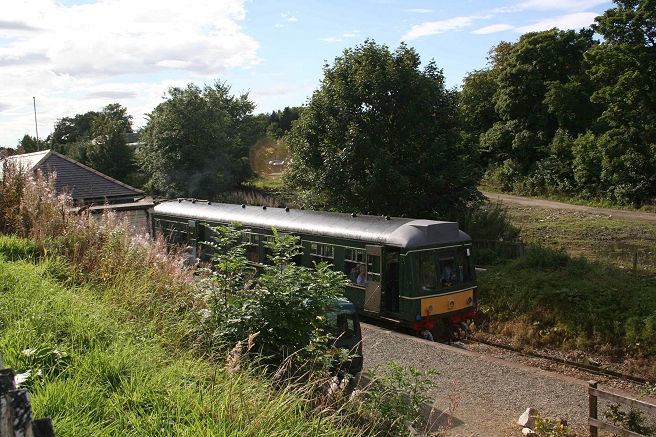
The DMU after arrival back at Keith Town
station. Just a brief time to capture a few pictures before the walk
back
to Keith Junction station
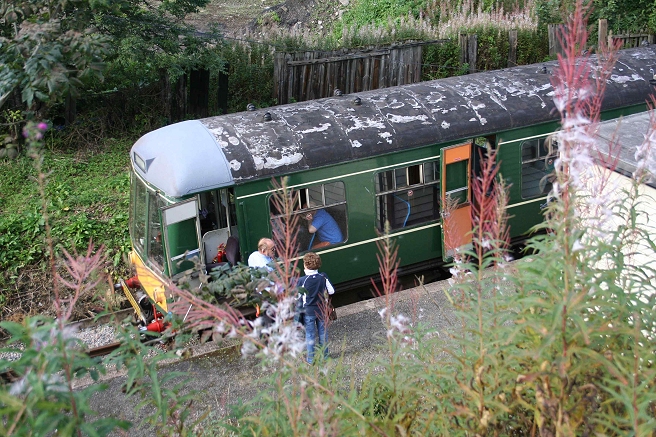
The driver chats to a passenger as he
changes ends for the next trip back to Dufftown
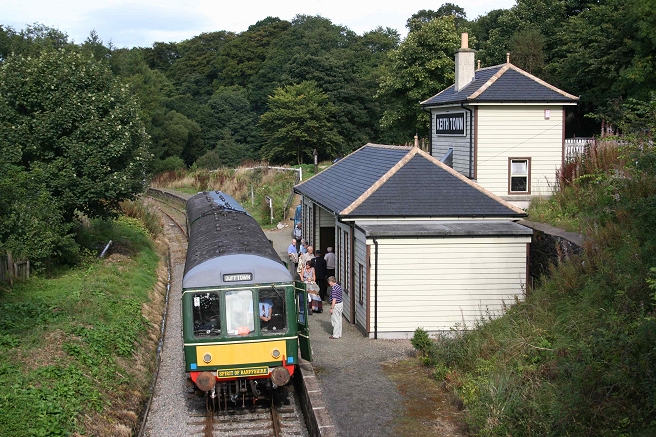
The DMU makes a fine subject standing by the
rebuilt station buildings. They have been designed exactly as the
originals,
which were demolished after the line closure in 1966.
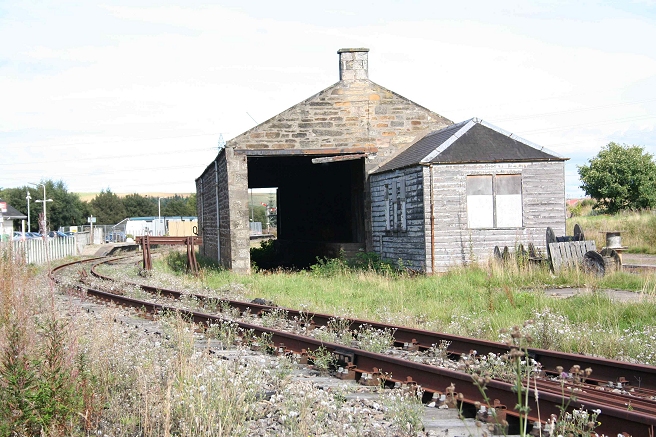
On the walk to Keith Junction station you
[pass the remains of the old through line and the Ex GNSR Goods Shed.
The shed was built of granite but the staff building is of wood.
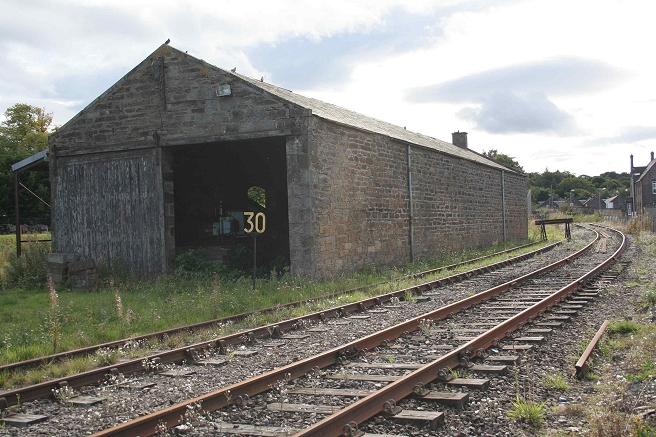
The goods shed is till in excellent
condition. There were two tracks towards Keith Town station, which
became single line
just up ahead. The through platform line (nearest) terminates at a
stop block just out of site
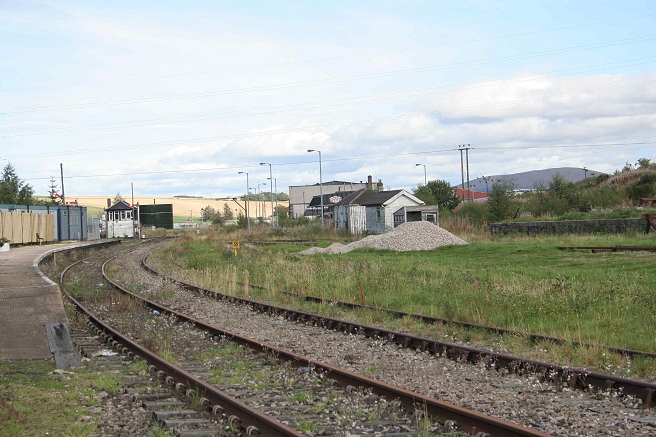
From the same spot looking south across the
goods yard with Keith Junction signal box on the left.
The high hills between Keith and Carnie (ex Junction to Elgin via
Tillynaught) is seen in the background.
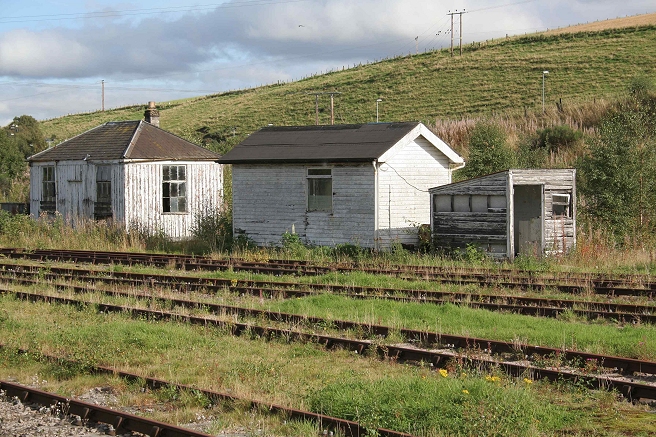
Three rather interesting ex GNSR huts and
cabins. The larger cabin on the far left was a shunter's cabin. The
center hut would
have been a store and the smaller hut for storing oil for point
lubricating and paraffin for signal and train tail lights.
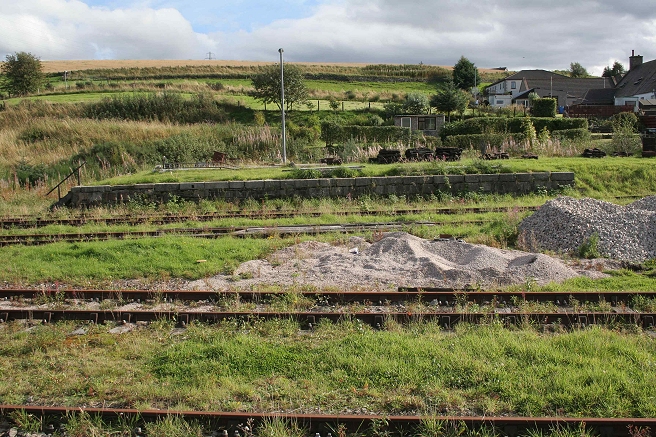
It's always sad to see unused loading
platforms, which tell of the time when the railway was considerably
more busy that today
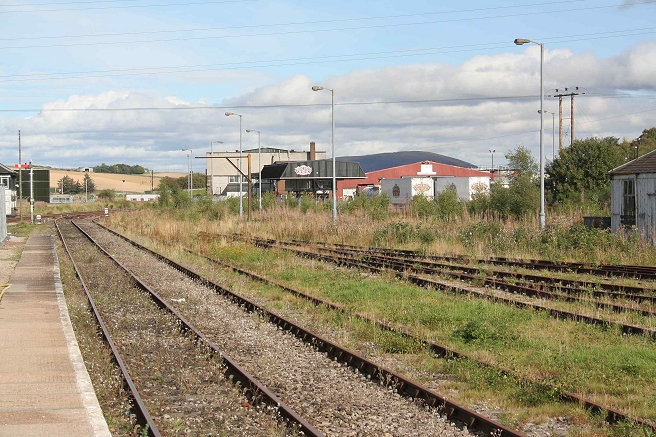
The platform line on the left is that of the
through line to Dufftown and today is a deadend. However, it is hoped
that the through
link will come about again before long. An interesting artifact is the
sorry looking loading gauge at the outlet of the old goods
sidings. These were used to stop wagons, and coaches that maybe
out of gauge, getting onto the main line. Such vehicles would
forwarded as 'Special workings' and given written permission to run,
with any restrictions indicated to the drivers and guards on
their train journals, so that they would know of the discripency and
to reduce speed at whichever point of the journey this action
would be required for the out of gauge vehicles to be pass safely. The
restriction may be width or height, where the vehicles may
wobble or bounce just enough to strike the underside of a bridge or
tunnel or scrape on platform edges and such at normal freight
train speeds. A fixed speed restriction past those affected areas
would avoid any problems.
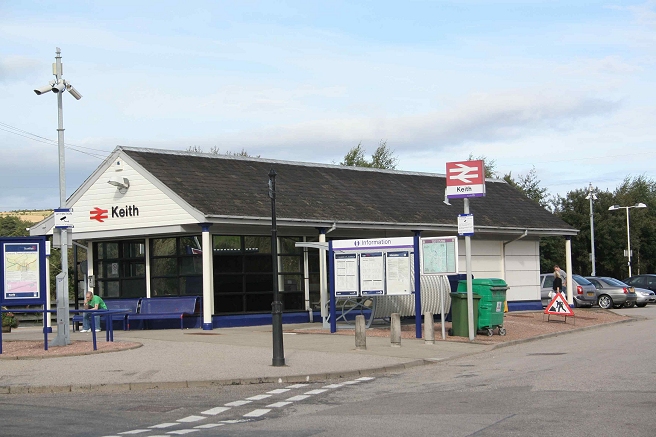
Keith mainline station. The old buildings
have all been demolished and a new building takes their place. It is
only staffed
during the peak hours
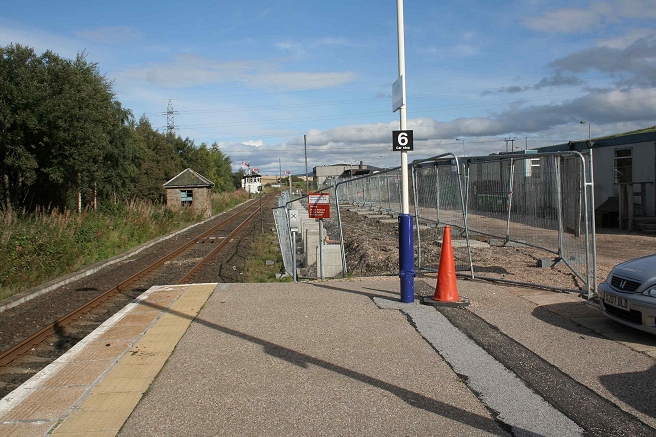
Looking south with the signal box in the
distance and the factory built on top of the original locomotive depot
on the far right
opposite. The station platform is being extended to take the longer
trains that are due to appear on the Aberdeen-Inverness
services in the near future
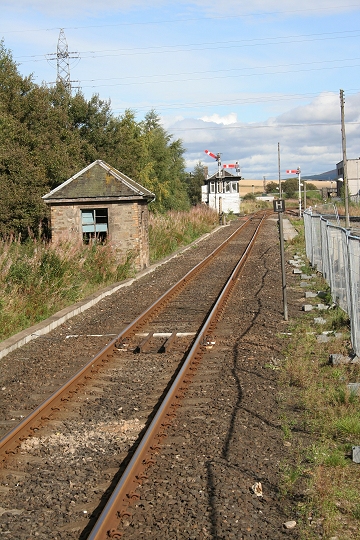
A closer view of the old ganger's hut,
signal box and ex loco depot
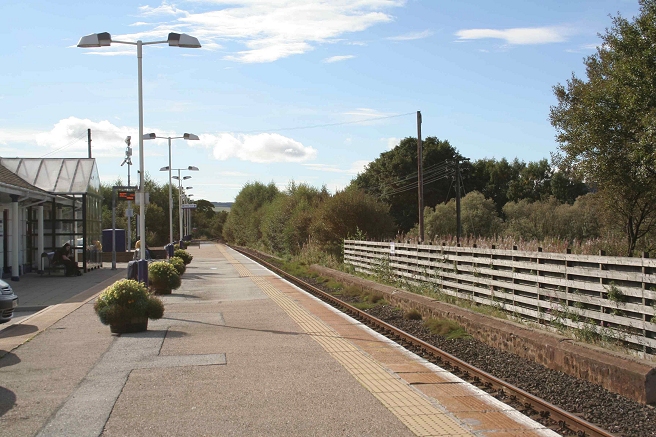
Keith Junction Station looking towards Elgin
and Inverness. This was where the GNSR terminated and the Highland
railway to
Inverness and beyond began. The Dufftown - Craigellachie branch was
behind the station building.
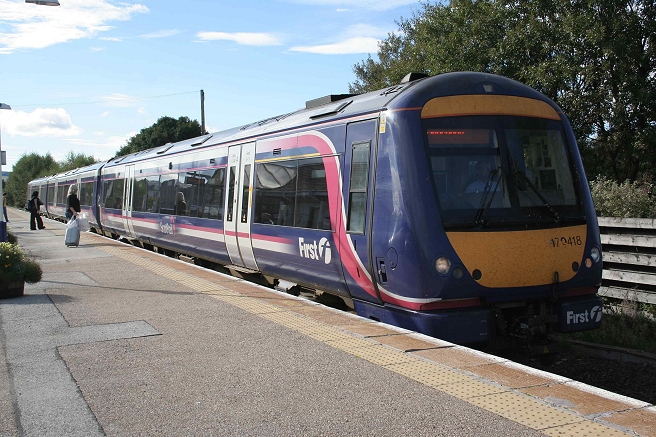
The Inverness-Aberdeen train arrives at
Keith
And so a very pleasant visit to the line which I worked over in the 60's came to an end. It was a very pleasant day but the timetables at each station don't match up very conveniently
and you either find yourself with a hurried walk too or from the stations or have very long waits for either train. It doesn't exactly encourage people to leave their cars at home and
take the train! The Keith-Dufftown timetable requires a little tweeking to at least give a fair chance of comfortable connection.